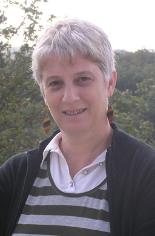The PARSEME 6th general meeting in Struga, FYR Macedonia will feature an invited talk by Irit Meir entitled "Sign languages and compounding" (see the slides).
 |
Irit Meir is a Professor of Linguistics and an Associate Director of the Sign Language Lab at the University of Haifa. Her research interests include sign language linguistics, focusing on morpho-syntax and argument structure, modality effects on linguistic structure, and the emergence of sign languages. She also studies morphology, syntax, and language change in Modern Hebrew. |
Abstract:
Sign languages, languages of deaf communities around the world, are natural languages, like spoken languages. They differ from spoken languages in their modality: they are produced by the hands, accompanied by the face and body, and are perceived by the eyes. The hands move in a three-dimensional space. The spatial-visual modality interacts with the linguistic structure of sign languages in interesting ways. In this talk, we explore the properties of compounding in sign languages. Specifically, we explore how the tendency towards lexicalization and manifestation of single-word properties are exhibited in sign languages, on the lexical, phonological, morphological and syntactic levels.Another characteristic of sign languages is that they are young, since they come into being when there is a group of deaf people interacting regularly with each other in a particular location. The conditions leading to the emergence of a sign language recur to the present day, and offer linguists the rare opportunity of watching a language develop almost from its inception. Focusing on compounds, the study of new languages may shed light on the emergence and development of complex words of this type in language generally. Based on on an ongoing research project of a young sign language that emerged about 80 years ago in the southern part of Israel, Al-Sayyid Bedouin Sign Language (ABSL) (Sandler et al. 2005, Aronoff et al. 2008, Meir et al. 2010), we can investigate how compounds arise in a new language, how they acquire structure and how they get conventionalized in a community.
Bibliography:
- Aronoff, Mark, Meir, Irit, Padden, Carol A., & Sandler, Wendy. 2008. The roots of linguistic organization in a new language. Interaction Studies: A Special Issue on Holophrasis Vs. Compositionality in the Emergence of Protolanguage., 9(1), 131-150.
- Meir, Irit, Aronoff, Mark, Sandler, Wendy & Padden, Carol A. 2010. Sign languages and compounding. In S.Scalise & I.Vogel (Eds.): Compounding. John Benjamins, 301-322.
- Sandler, Wendy, Meir, Irit, Padden, Carol A. and Aronoff, Mark. 2005. The emergence of grammar: Systematic structure in a new language. Proceedings of the National Academy of Sciences, 102(7).
